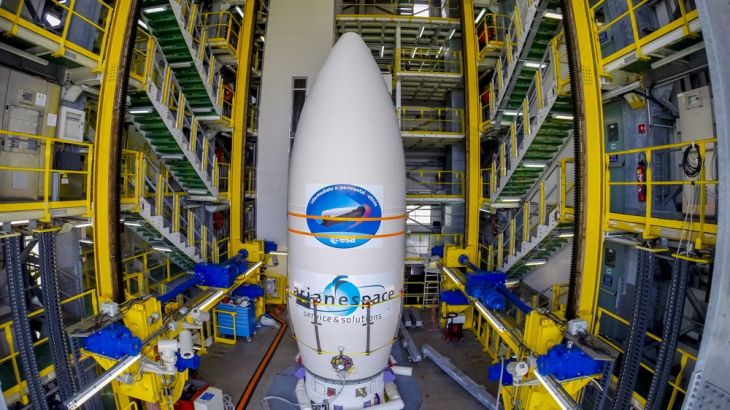Europe to launch experimental wingless space plane
100-minute test flight of unmanned car-sized vessel to help inform future design of reusable spacecraft.

Europe is set to launch an experimental “space plane”, a car-sized, wingless vessel whose 100-minute unmanned mission will inform the design of reusable spacecraft of the future.
The European Space Agency’s two-tonne, five-metre-long Intermediate eXperimental Vehicle (IXV) was scheduled to be blasted into space on a Vega rocket from a space pad in Kourou, French Guiana, at 13:00 GMT on Wednesday.
Keep reading
list of 4 itemsCould shipping containers be the answer to Ghana’s housing crisis?
Are Chinese electric vehicles taking over the world?
First pig kidney in a human: Is this the future of transplants?
It will separate from the launcher about 18 minutes later, some 320km above Earth, and then climb to a height of about 450km before starting its descent at several times the speed of sound, recording valuable data along the way.
A parachute will deploy to slow the descent, and balloons will keep the craft afloat after splashdown in the Pacific Ocean, where it will be recovered by a ship for analysis.
Re-entry is a major challenge for the aerospace industry – as illustrated when Space Shuttle Columbia disintegrated in Earth’s atmosphere in February 2003, killing all seven crew.
Friction with the Earth’s atmosphere slows the returning craft, but also heats the outside to scorching temperatures.
If the re-entry angle is too steep the craft will burn up, too shallow and it may bounce off the atmosphere or pierce through but completely miss its landing target.
“We are able to go [to space], we are able to stay in orbit, what we want to learn today is to close the loop, to return from orbit, and this is one of the most complex disciplines in space activity,” IXV programme manager Giorgio Tumino told the AFP news agency.
Since NASA retired its Space Shuttle, Russia’s Soyuz is the only spacecraft that can ferry astronauts to and from the orbiting International Space Station. Private company Space X’s Dragon is the only re-entry cargo craft.
Boeing and SpaceX are developing reusable astronaut carriers for NASA, which is also working on the Orion craft it hopes will take humans to Mars. All are based on the capsule design.
“Today we have our astronauts flying in Russian capsules, if one day we want them with the capability to fly back with European technology, this is fundamental,” Tumino said of the IXV mission.